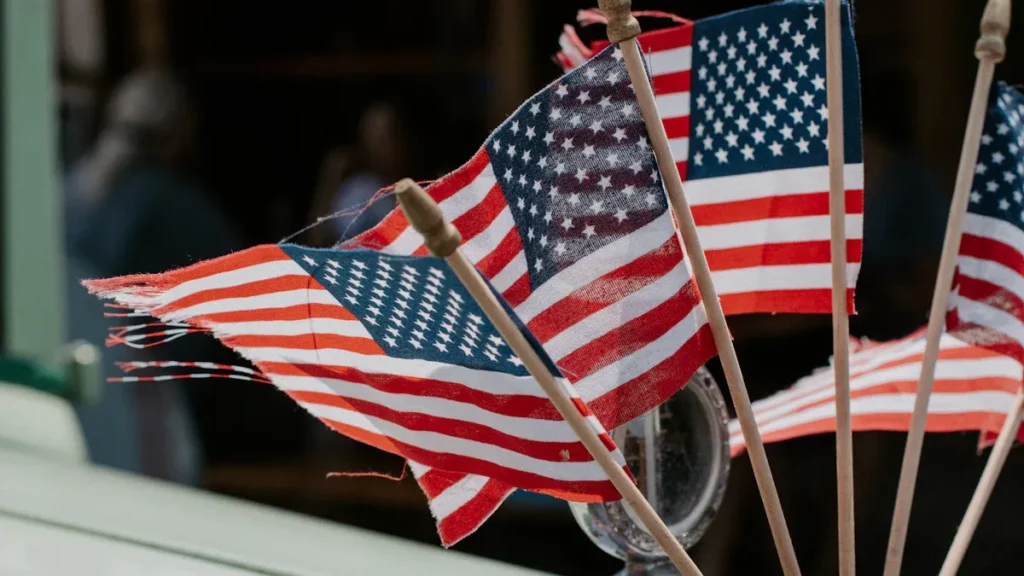How to Upgrade Your Harley Davidson with LED Lights
Table of Contents
-
Motorcycle Flag Mounts
Motorcycle 1 1/4″ Highway Engine Guard Crash Bar For Harley Sportster XL 1200 883 2004-2021
$149.99 – $259.99Price range: $149.99 through $259.99 This product has multiple variants. The options may be chosen on the product pageRated 0 out of 5 -
Motorcycle Flag Mounts
Motorcycle LED Saddlebag Lid Spoiler Kit For Harley Touring Road King Electra Glide Street Road Glide 2014-2024
$67.99Rated 0 out of 5 -
Flag Mounts & Flags
2Pack Support Breast Cancer Awareness with Stylish Harley Davidson Motorcycle Flags
$19.99Rated 0 out of 5 -
Flag Mounts & Flags
2Pack Breast Cancer Awareness Harley DavidsonMotorcycle Flag – Ride with Purpose
$19.99Rated 0 out of 5

Upgrading your Harley Davidson with LED lights transforms your ride in more ways than one. These lights enhance visibility, making nighttime rides safer for you and others on the road. They also consume up to 90% less energy than traditional bulbs, which helps conserve your motorcycle’s battery life. Beyond practicality, LED lights add a sleek, modern aesthetic that turns heads wherever you go. The best part? You can install LED lights yourself with just a few tools and a bit of guidance, making it a fun and rewarding DIY project.
Key Takeaways
Upgrading to LED lights enhances visibility and safety during nighttime rides while consuming up to 90% less energy than traditional bulbs.
Gather essential tools like screwdrivers, wire cutters, and a multimeter before starting the installation to ensure a smooth process.
Clean and inspect your motorcycle before installation to ensure proper adhesion and functionality of the LED lights.
Disconnect the battery before working on the electrical system to prevent accidental shorts or shocks.
Plan the placement of LED lights strategically to highlight key areas of your motorcycle and improve its overall aesthetic.
Regularly check and maintain your LED lights to ensure they remain bright and functional, preventing issues caused by loose connections or dirt buildup.
Always comply with local regulations regarding motorcycle lighting to ensure safety and avoid fines.
Tools and Materials for LED Light Installation

Before diving into the installation process, you’ll need to gather the right tools and materials. Having everything ready will save you time and make the project smoother. Let’s break it down into essential tools, materials, and safety gear.
Essential Tools
You don’t need a professional workshop to install LED lights on your Harley, but a few basic tools are a must:
Screwdrivers, wrenches, and a 1/2 socket with ratchet
These tools help you remove panels, tighten bolts, and access hard-to-reach areas. Make sure you have both flathead and Phillips screwdrivers for versatility.
Wire cutters, strippers, and a multimeter
Wire cutters and strippers let you trim and prepare wires for connections. A multimeter is crucial for checking voltage and ensuring your electrical system works properly.
Heat shrink tubing, heat gun, and electrical tape
Heat shrink tubing protects your wire connections from moisture and wear. Use a heat gun to seal the tubing securely. Electrical tape adds an extra layer of insulation.
Zip ties for wire management
Zip ties keep your wires neat and prevent them from tangling or dangling. They’re inexpensive and make your installation look professional.
Materials Needed
Choosing the right materials ensures your LED lights perform well and last long. Here’s what you’ll need:
High-quality, waterproof LED light strips or pods
Invest in durable, waterproof LED lights designed for motorcycles. These lights withstand weather conditions and vibrations while delivering bright, consistent illumination.
Wiring harness, connectors, and adhesive or mounting brackets
A wiring harness simplifies the connection process and reduces the risk of errors. Use connectors for secure joins and adhesive or brackets to mount the lights firmly.
Optional: Remote control or app for LED customization
For added convenience, consider LED lights with remote control or app compatibility. These features let you change colors, brightness, and patterns with ease.
Safety Gear
Safety should always come first when working on your motorcycle. Equip yourself with the following:
Gloves and safety glasses for protection
Wear gloves to protect your hands from sharp edges and electrical components. Safety glasses shield your eyes from debris and accidental sparks.
Multimeter for electrical testing
Use a multimeter to test your connections before powering up the system. This step prevents short circuits and ensures everything works as intended.
Pro Tip: Double-check your tools and materials before starting. Missing even one item can slow you down or compromise the quality of your installation.
With these tools, materials, and safety gear in hand, you’re ready to move on to preparing your Harley for its LED transformation.
Preparing Your Harley Davidson for LED Light Installation
Before you start installing LED lights, it’s crucial to prepare your motorcycle properly. A little prep work goes a long way in ensuring a smooth installation process and long-lasting results. Let’s break it down into three key steps: cleaning and inspecting, disconnecting the battery, and planning the light placement.
Cleaning and Inspecting the Motorcycle
A clean and well-maintained motorcycle provides the perfect foundation for your LED light installation. Dirt, grease, or debris can prevent the adhesive backing of LED strips from sticking securely. Follow these steps to get your bike ready:
Clean surfaces where LED lights will be mounted
Use a microfiber cloth and a mild cleaning solution to wipe down areas where you plan to mount the lights. Focus on spots like the underbody, engine casing, or wheel arches. Removing grime ensures the adhesive sticks firmly and stays in place over time.
Inspect the battery and electrical system for issues
Take a moment to check your motorcycle’s battery and wiring. Look for signs of corrosion, loose connections, or frayed wires. Addressing these issues now prevents potential electrical problems during or after the installation. Regular maintenance like this not only keeps your bike in top shape but also enhances safety when working on its electrical components.
Pro Tip: If you notice any major electrical issues, consider consulting a professional mechanic before proceeding with the installation.
Disconnecting the Battery
Working on your motorcycle’s electrical system requires extra caution. Disconnecting the battery is a simple yet essential step to avoid accidental shorts or shocks.
Steps to safely disconnect the battery
Start by turning off the ignition and removing the key. Locate the battery, usually found under the seat or a side panel. Use a wrench to loosen the negative terminal first, followed by the positive terminal. This sequence minimizes the risk of sparks or electrical discharge.
Importance of preventing electrical shorts
Disconnecting the battery protects both you and your motorcycle. It eliminates the chance of damaging sensitive components or causing a short circuit while handling wires. This small precaution can save you from costly repairs later.
Safety Reminder: Always double-check that the battery is fully disconnected before moving on to the next steps.
Planning LED Light Placement
Strategic placement of LED lights can make your motorcycle stand out while improving visibility. Take your time to plan where each strip or pod will go for the best effect.
Identify key areas to highlight (e.g., underbody, engine, wheels)
Think about the parts of your motorcycle you want to emphasize. Popular spots include the underbody for an underglow effect, the engine to showcase its design, and the wheels for added flair. Highlighting these areas not only enhances the bike’s appearance but also improves visibility on the road.
Test-fit LED strips to ensure proper placement
Before securing the lights, hold them in place to see how they look. Use masking tape to temporarily attach the strips and step back to evaluate the overall effect. Adjust as needed to achieve a balanced and symmetrical look.
Pro Tip: Avoid placing lights near moving parts or areas exposed to excessive heat, as this could damage the LEDs over time.
By cleaning, inspecting, disconnecting the battery, and planning the placement, you’re setting yourself up for a successful LED light installation. These steps ensure your motorcycle is ready for its transformation, making the process smoother and more enjoyable.
Step-by-Step Guide to Install LED Lights on Your Harley

Installing LED lights on your Harley Davidson can seem like a daunting task, but breaking it into manageable steps makes it straightforward. Follow this guide to ensure a smooth and successful installation.
Wiring the LED Lights
Proper wiring is the backbone of any LED light installation. Taking your time here ensures your lights function correctly and last longer.
Connect LED strips to the wiring harness
Start by connecting your LED light strips to the wiring harness. Most LED kits come with a pre-assembled harness, making this step easier. Match the positive and negative wires from the LED strips to the corresponding terminals on the harness. If your kit includes a connector box, insert the wires into their designated slots. Double-check that all connections are secure to avoid flickering or power loss later.
Pro Tip: Use a multimeter to test the voltage at each connection point before moving forward. This ensures everything is wired correctly.
Route wires to avoid tangling or damage
Once the LED strips are connected, route the wires along the frame of your motorcycle. Keep them away from moving parts like the wheels or chain. Use zip ties to secure the wires neatly and prevent them from dangling. A clean wiring setup not only looks professional but also reduces the risk of damage during rides.
Expert Advice: According to motorcycle mechanics, keeping wires organized and away from heat sources like the engine prolongs their lifespan.
Securing the LED Strips
After wiring, the next step is to secure the LED strips in place. Proper mounting ensures they stay put even during bumpy rides.
Use adhesive or mounting brackets for a secure fit
Most LED light strips come with adhesive backing or mounting brackets. Clean the surface where you plan to install these strips to ensure the adhesive sticks well. Peel off the backing and press the strip firmly onto the surface. If your kit includes brackets, screw them into place for added security.
Pro Tip: For areas exposed to high vibrations, consider using both adhesive and brackets for extra stability.
Ensure strips are snug to prevent movement
Check that each LED strip is snug against the surface. Loose strips can shift over time, affecting the overall look and functionality. Press down on each strip to confirm it’s firmly attached. If needed, add a small amount of electrical tape for reinforcement.
Reminder: Avoid placing strips near areas that get excessively hot, as this could weaken the adhesive over time.
Connecting to the Power Source
The final step in your LED light installation involves connecting the system to your motorcycle’s power source. This step brings your lights to life.
Attach the positive and negative leads to the battery terminals
Locate your motorcycle’s battery, usually under the seat or a side panel. Strip a small section of the plastic jacket from the positive and negative leads of the wiring harness. Wrap the positive lead around the positive terminal and the negative lead around the negative terminal. Tighten the connections with a wrench to ensure they’re secure.
Safety Tip: Always connect the positive lead first to minimize the risk of sparks.
Reconnect the battery and test the power connection
Once the leads are attached, reconnect the battery. Turn on the ignition and test the LED lights. Check each strip to ensure it lights up properly. If any strips don’t work, revisit the wiring to troubleshoot the issue. Once everything is functioning, switch off the ignition and tidy up any loose wires.
Expert Insight: If your kit includes a remote control or app, now is the time to pair it with your lights for added customization.
By following these steps, you can install LED brake lights, taillights, or accent lights on your Harley with confidence. This process not only enhances your bike’s appearance but also improves visibility and safety on the road.
Testing and Adjusting the LED Lights
Once you’ve installed the LED lights on your bike, it’s time to test and fine-tune them. This step ensures everything works as it should and looks exactly how you envisioned. Let’s walk through the process of testing functionality, adjusting placement, and cleaning up for a polished finish.
Testing the Functionality
Before hitting the road, you need to confirm that your lights are operating correctly. A quick test can save you from potential issues later.
Turn on the lights to check for proper operation
Switch on your bike’s ignition and activate the LED lights. Observe each strip or pod to ensure they illuminate as expected. Pay attention to brightness and color consistency. If your lights include features like flashing or color-changing modes, cycle through them to verify they work properly.
Quick Tip: If you notice dim or uneven lighting, double-check the wiring connections. Loose wires are often the culprit.
Troubleshoot issues like flickering or no power
If any lights flicker or fail to turn on, don’t panic. Start by inspecting the wiring harness and connectors. Look for loose or disconnected wires. Use a multimeter to test the voltage at each connection point. If the issue persists, examine the LED strips themselves for damage. Replacing a faulty strip is easier now than after everything is finalized.
Pro Insight: LED lights are durable but sensitive to improper wiring. Ensuring secure connections prevents most problems.
Adjusting Placement
Even if your lights are functional, their placement might need some tweaking. Adjusting their position can enhance both the look and effectiveness of your setup.
Fine-tune the position of LED strips for optimal effect
Step back and evaluate how the lights look on your bike. Are they highlighting the areas you wanted? If not, carefully reposition them. For example, if you’re aiming for an underglow effect, ensure the strips are evenly spaced along the underbody. Adjusting placement now avoids regrets later.
Pro Tip: Use masking tape to temporarily hold strips in place while you experiment with different positions.
Secure any loose wires or components
Check for any wires that might be dangling or exposed. Use zip ties to bundle them neatly along the bike’s frame. This not only improves the appearance but also prevents wires from getting caught in moving parts. Double-check that all LED strips are firmly attached and won’t shift during rides.
Reminder: A clean and secure setup not only looks professional but also extends the lifespan of your lights.
Cleaning Up
The final step is tidying up your work. A clean finish makes your installation look seamless and professional.
Remove excess adhesive or tape
Inspect the areas where you mounted the lights. If you see any leftover adhesive or tape, gently remove it with a microfiber cloth and a mild cleaner. This step ensures your bike looks polished and free of clutter.
Ensure a clean, professional finish
Take a moment to admire your work. Look for any uneven edges, stray wires, or smudges. Fix these small details to give your bike a showroom-quality appearance. A little extra effort here goes a long way in making your LED lights stand out.
Final Thought: A well-installed LED lighting system not only enhances your bike’s style but also boosts its visibility on the road. Take pride in your work and enjoy the transformation.
Tips for a Professional-Looking LED Light Installation
Upgrading your Harley with LED lights is more than just a functional improvement. It’s an opportunity to showcase your style and make your bike stand out. To achieve a polished, professional look, focus on choosing the right lights, managing wires effectively, and enhancing the overall aesthetic appeal.
Choosing the Right LED Lights
The foundation of a great LED lighting setup starts with selecting the best lights for your Harley Davidson. Not all LED lights are created equal, so it’s important to pick ones that meet your needs.
Opt for high-quality, waterproof LED strips
Invest in durable, waterproof LED strips or pods designed specifically for motorcycles. These lights can withstand harsh weather conditions, vibrations, and the heat generated by your bike. Unlike traditional incandescent bulbs, LEDs emit very little heat, making them safer and more energy-efficient. High-quality LEDs also last longer, ensuring you won’t need to replace them frequently.
Quick Tip: Look for LED lights with a high IP (Ingress Protection) rating, such as IP65 or higher, to ensure they’re resistant to water and dust.
Consider multi-color or customizable options
If you want to take your Harley’s customization to the next level, choose LED lights with multi-color or customizable features. Many modern LED kits come with remote controls or smartphone apps that let you change colors, brightness, and even patterns. This adds a fun, creative element to your DIY project and allows you to match your lights to different moods or events.
Pro Insight: Customizable LED lights are perfect for bike shows or nighttime rides where you want to make a bold statement.
Managing Wires and Connections
A clean and organized wiring setup is key to achieving a professional finish. Messy wires not only look bad but can also cause functional issues down the line.
Use zip ties to organize wires neatly
Zip ties are your best friend when it comes to wire management. Secure the wires along the frame of your Harley Davidson to keep them tidy and out of sight. This prevents tangling and ensures the wires don’t interfere with moving parts like the wheels or chain. A well-organized wiring system also makes future maintenance easier.
Pro Tip: Use black or matching-colored zip ties to blend seamlessly with your bike’s frame for a cleaner look.
Avoid visible wires for a clean look
Take the time to hide wires wherever possible. Route them through existing channels or under panels to keep them out of view. Visible wires can detract from the sleek appearance of your Harley and make the installation look rushed. A hidden wiring setup not only looks better but also protects the wires from wear and tear.
Reminder: Double-check that wires are not near heat sources like the engine, as excessive heat can damage them over time.
Enhancing the Aesthetic Appeal
Your Harley Davidson is a reflection of your personality, and the LED lighting system should enhance its unique features. Thoughtful placement and color choices can elevate your bike’s overall look.
Match LED colors to your Harley’s theme
Choose LED colors that complement your Harley’s paint job or overall theme. For example, if your bike has a classic black-and-chrome look, white or blue LEDs can add a modern touch. If your Harley has a bold, colorful design, multi-color LEDs can amplify its vibrancy. Matching the lights to your bike’s style creates a cohesive and eye-catching appearance.
Quick Tip: Avoid using too many colors at once, as this can make the setup look cluttered. Stick to one or two colors for a more refined look.
Highlight unique features of your motorcycle
Strategically place LED lights to draw attention to your Harley’s standout features. Illuminate the engine to showcase its craftsmanship, or add underglow lights to emphasize the bike’s silhouette. Highlighting these areas not only enhances the aesthetic appeal but also improves visibility, making your bike safer on the road.
Pro Insight: Many riders use LED lights to accentuate custom parts or modifications, turning their Harley into a true showpiece.
By focusing on quality lights, neat wiring, and thoughtful placement, you can transform your Harley Davidson into a head-turning masterpiece. This DIY project not only enhances your bike’s functionality but also gives you the satisfaction of creating something uniquely yours.
Safety Precautions for LED Light Installation
When installing LED lights on your Harley Davidson, safety should always be your top priority. Taking the right precautions ensures a smooth installation process and keeps you and your bike safe. Let’s dive into the key safety measures you need to follow.
Electrical Safety
Working with your motorcycle’s electrical system requires extra care. A small mistake can lead to big problems, so it’s important to handle everything correctly.
Avoid working on a live electrical system
Never work on your bike’s electrical system while it’s live. Always disconnect the battery before starting any installation. This simple step prevents accidental shocks or short circuits. Turn off the ignition, remove the key, and disconnect the negative terminal first. This sequence minimizes the risk of sparks or damage to sensitive components.
Quick Tip: Double-check that the battery is fully disconnected before handling any wires.
Use a multimeter to check for proper voltage
A multimeter is an essential tool for any electrical project. Use it to test the voltage at each connection point before powering up your LED lights. This ensures that everything is wired correctly and prevents potential issues like flickering or no power. Testing with a multimeter also helps you identify any weak signals in the system, allowing you to fix them before they cause problems.
Pro Insight: Consistent voltage is key to keeping your LED lights functioning properly over time.
Road Safety
Your LED lights should not only look great but also comply with local laws and enhance your safety on the road. Ignoring regulations can lead to fines or even accidents.
Ensure compliance with local regulations for LED lights
Different states have specific rules about motorcycle lighting. For example, Maryland prohibits red, blue, oscillating, or flashing lights on motorcycles. In Maine, front lights must be white or amber, while rear lights must be red or amber. Some states, like Michigan, ban under-glow lighting entirely. Before installing your LED lights, check your state’s regulations to ensure compliance.
Reminder: Following these rules not only keeps you legal but also ensures your lights don’t confuse other drivers.
Avoid overly bright or distracting colors
While bright lights can look cool, they can also distract other drivers. Stick to colors that enhance visibility without being overwhelming. For instance, white or amber lights work well for the front, while red or amber are ideal for the rear. Avoid using flashing or strobe effects unless they’re specifically allowed in your area.
Safety Note: Distracting lights can increase the risk of accidents, especially at night.
Maintenance Tips
Once your LED lights are installed, regular maintenance keeps them in top shape. Neglecting this step can lead to performance issues over time.
Regularly check for loose wires or connections
Vibrations from riding can loosen wires or connections over time. Inspect your wiring regularly to ensure everything stays secure. Look for any signs of wear or damage, especially near moving parts or heat sources. Tighten any loose connections to maintain strong signals and prevent flickering.
Pro Tip: Use zip ties to keep wires neatly organized and reduce the risk of damage.
Clean LED lights to maintain brightness
Dirt and grime can build up on your LED lights, reducing their brightness and effectiveness. Use a microfiber cloth and a mild cleaner to wipe down the lights regularly. This simple step keeps them shining brightly and ensures they remain visible to other drivers.
Quick Tip: Avoid abrasive cleaners that could scratch the surface of your LED lights.
By following these safety precautions, you can enjoy your new LED lights with peace of mind. Whether it’s electrical safety, road compliance, or regular maintenance, taking these steps ensures your installation is both safe and long-lasting.
Upgrading your bike with LED lights offers more than just a stylish appearance. It enhances safety by providing maximum visibility on the road and conserves energy with its efficiency. By following this guide, you can confidently transform your Harley into a head-turning masterpiece. Whether you’re installing a new tail light or accentuating unique features, the process is straightforward and rewarding. If you ever feel unsure, don’t hesitate to seek professional help. Your Harley deserves the best, and with LED lights, you’re giving it a brilliant upgrade.
FAQ
How long does it take to install LED lights on a Harley-Davidson?
The time it takes depends on your experience and preparation. If you’ve gathered all the tools and materials beforehand, the process can take about 2-4 hours. Beginners might need extra time to plan the placement and ensure proper wiring. Taking your time ensures a clean and professional-looking installation.
Can I install LED lights on my Harley-Davidson without professional help?
Yes, you can! Installing LED lights on your Harley-Davidson is a straightforward DIY project. With the right tools, a good lighting kit installation guide, and some patience, you can handle it yourself. However, if you’re unsure about working with electrical systems, seeking professional help is always a safe option.
Are LED lights legal on motorcycles?
LED lights are generally legal, but laws vary by state or country. Some areas restrict certain colors or flashing patterns. For example, red or blue lights might be reserved for emergency vehicles. Before installing, check your local regulations to ensure your Harley-Davidson stays road-legal.
Do LED lights drain the motorcycle battery?
No, LED lights consume significantly less power than traditional bulbs. They are energy-efficient and designed to conserve your Harley-Davidson’s battery life. However, improper wiring or leaving the lights on when the bike is off can still drain the battery. Always double-check your connections and turn off the lights when not in use.
Where should I place LED lights on my Harley-Davidson?
Popular spots include the underbody for an underglow effect, the engine to highlight its design, and the wheels for added flair. You can also place them near the gas tank or lower fairing. Avoid areas exposed to excessive heat or moving parts. Test-fit the lights before securing them to ensure they look balanced.
What tools do I need for LED light installation?
You’ll need basic tools like screwdrivers, wrenches, wire cutters, and a multimeter. Additional items like heat shrink tubing, zip ties, and electrical tape help secure the setup. A good lighting kit often includes mounting brackets or adhesive for easy installation. Having these tools ready will make the process smoother.
Can I customize the colors of my LED lights?
Yes, many modern lighting kits come with customizable options. Some include remote controls or smartphone apps that let you change colors, brightness, and patterns. This feature allows you to turn your Harley-Davidson into a unique, eye-catching ride.
How do I prevent wires from getting damaged?
Route the wires along the frame of your Harley-Davidson and secure them with zip ties. Keep them away from moving parts like the wheels or chain. Avoid placing wires near heat sources such as the engine. Proper wire management not only protects the setup but also gives your bike a clean, professional look.
What should I do if my LED lights flicker or don’t turn on?
Start by checking the wiring connections. Loose or improperly connected wires are often the cause. Use a multimeter to test the voltage at each connection point. If the issue persists, inspect the LED strips for damage. Replacing a faulty strip or rechecking the wiring usually resolves the problem.
How do I maintain my LED lights after installation?
Regular maintenance keeps your LED lights in top shape. Clean them with a microfiber cloth and mild cleaner to remove dirt and grime. Check for loose wires or connections caused by vibrations during rides. Keeping the lights and wiring secure ensures they stay bright and functional for years.
Pro Tip: Always turn off your Harley-Davidson before performing any maintenance on the lights.








